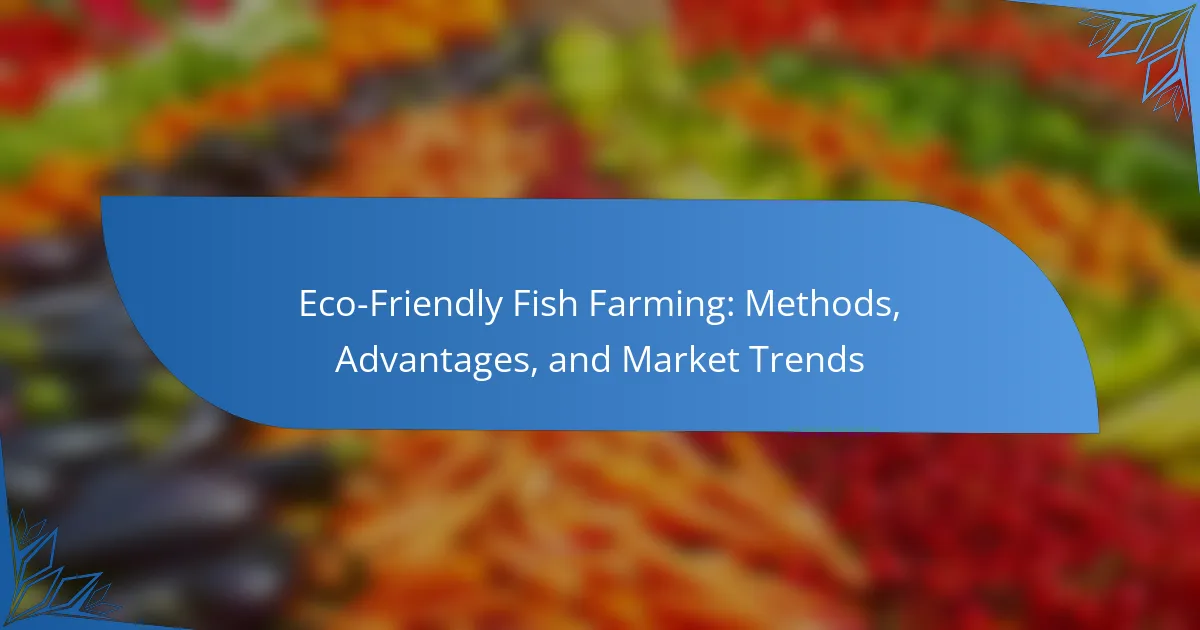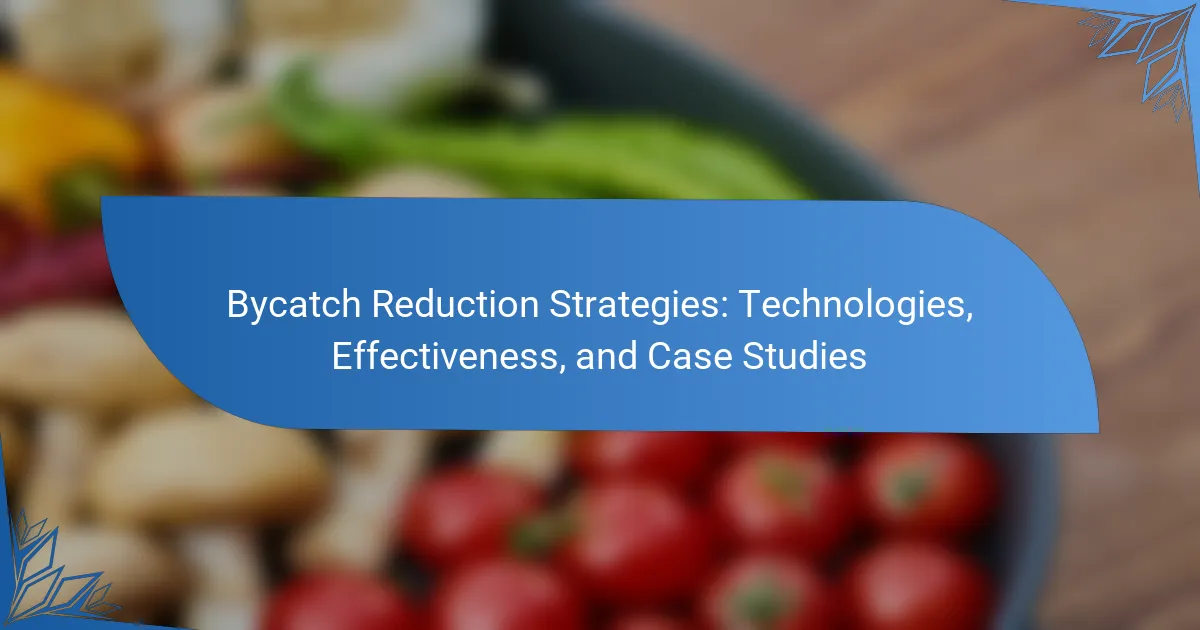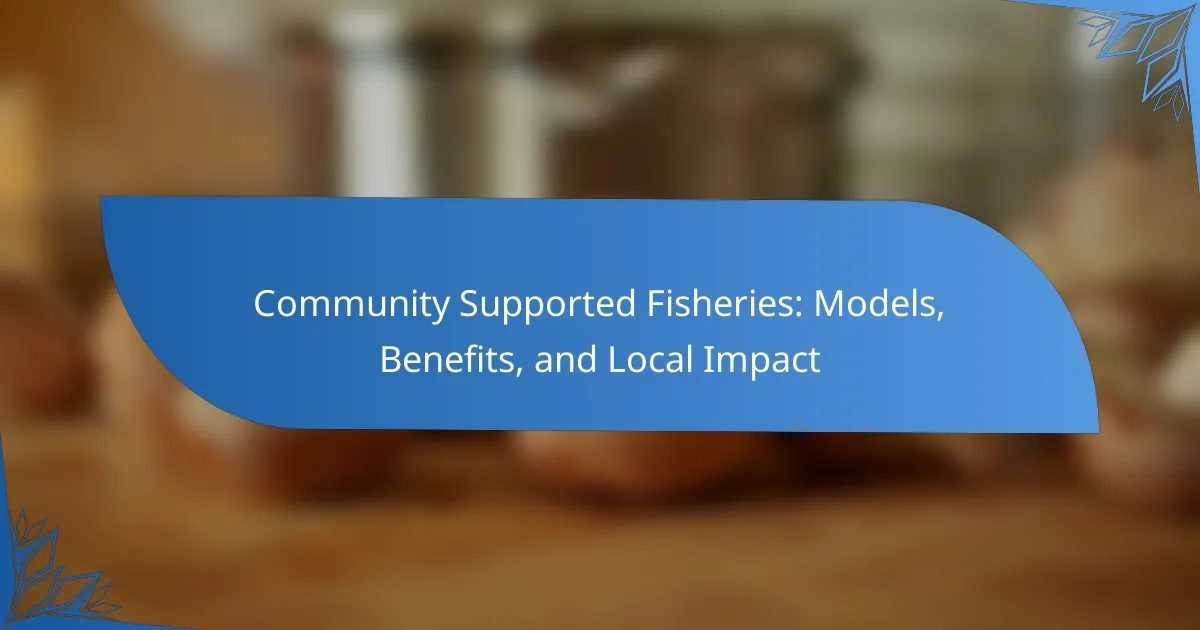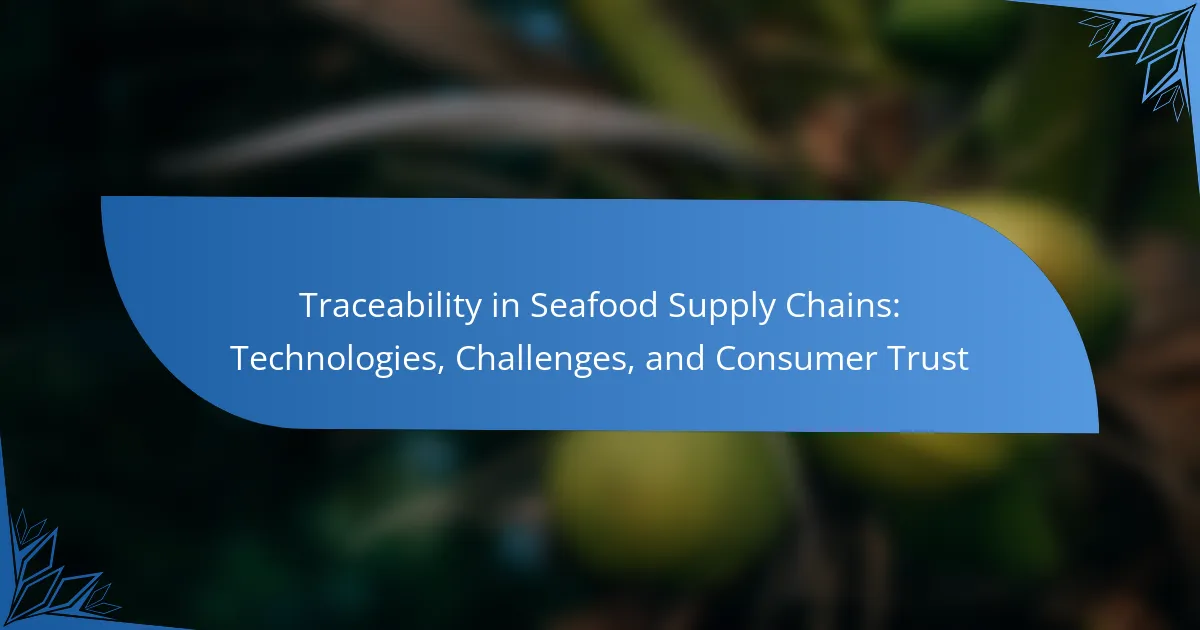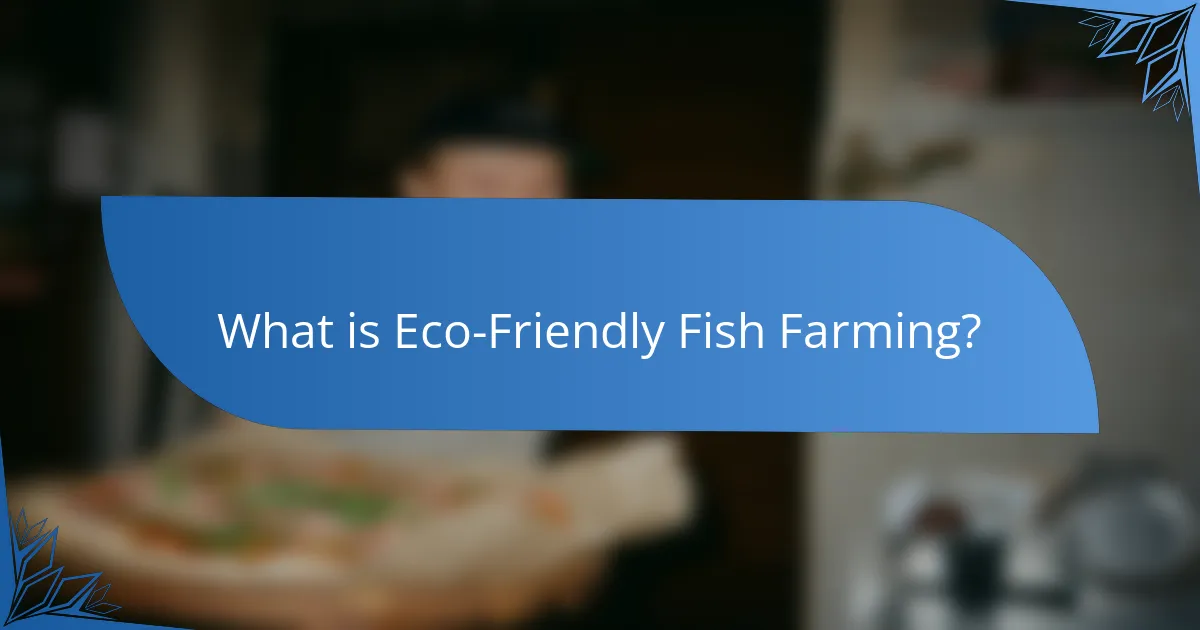
What is Eco-Friendly Fish Farming?
Eco-friendly fish farming is a sustainable method of aquaculture that minimizes environmental impact. It focuses on responsible practices that protect ecosystems and conserve resources. This approach includes using natural feed sources, maintaining water quality, and reducing pollution. Eco-friendly fish farms often employ integrated multi-trophic aquaculture (IMTA) systems. IMTA systems utilize various species to create a balanced ecosystem. For example, fish, shellfish, and plants can coexist, enhancing nutrient cycling. Research indicates that eco-friendly practices can improve fish health and yield. According to the Food and Agriculture Organization, sustainable aquaculture can meet global seafood demand while preserving marine environments.
How does Eco-Friendly Fish Farming differ from traditional methods?
Eco-Friendly Fish Farming prioritizes sustainability over traditional methods. It reduces environmental impact by minimizing pollution and habitat destruction. Traditional methods often rely on overfishing and harmful chemicals. Eco-friendly practices include using organic feed and natural breeding techniques. These methods promote biodiversity and ecosystem health. Research indicates that eco-friendly farms can reduce disease transmission among fish populations. This leads to healthier fish and safer food for consumers. Additionally, eco-friendly fish farming often utilizes recirculating aquaculture systems, which conserve water. Traditional farming methods typically waste significant water resources.
What are the key practices in Eco-Friendly Fish Farming?
Key practices in eco-friendly fish farming include sustainable feed sourcing, habitat conservation, and integrated multi-trophic aquaculture. Sustainable feed sourcing ensures that fish are fed diets that do not deplete wild fish stocks. Habitat conservation involves protecting local ecosystems and minimizing the impact of fish farming on surrounding environments. Integrated multi-trophic aquaculture combines different species to utilize waste products effectively. These practices enhance biodiversity and reduce the ecological footprint of fish farming. Additionally, regular monitoring of water quality and fish health is essential for maintaining sustainable operations. According to the Food and Agriculture Organization, these methods contribute to more resilient and productive aquaculture systems.
How does sustainability play a role in Eco-Friendly Fish Farming?
Sustainability is fundamental to eco-friendly fish farming as it ensures the preservation of aquatic ecosystems. This practice minimizes environmental impact by reducing pollution and conserving resources. Sustainable methods include using renewable energy sources and implementing responsible feed management. These approaches help maintain biodiversity and prevent overfishing of wild fish stocks. Studies show that sustainable aquaculture can yield higher long-term profitability. According to the Food and Agriculture Organization, sustainable fish farming practices can reduce greenhouse gas emissions significantly. This makes eco-friendly fish farming a viable solution for meeting global seafood demand while protecting the environment.
Why is Eco-Friendly Fish Farming important for the environment?
Eco-friendly fish farming is important for the environment because it reduces pollution and conserves natural resources. Traditional fish farming often leads to water contamination and habitat destruction. In contrast, eco-friendly methods utilize sustainable practices that minimize these negative impacts. For instance, they often incorporate integrated multi-trophic aquaculture, which recycles nutrients and improves water quality. Research indicates that eco-friendly fish farming can significantly lower the use of antibiotics and chemicals. According to a study published in the journal “Aquaculture,” sustainable practices can enhance biodiversity and restore aquatic ecosystems. Thus, eco-friendly fish farming plays a crucial role in promoting environmental health and sustainability.
What are the environmental impacts of conventional fish farming?
Conventional fish farming has significant environmental impacts. These include water pollution from excess nutrients and chemicals. Fish waste can lead to eutrophication in surrounding waters. Habitat destruction occurs due to the clearing of coastal areas for farms. Overfishing of wild fish for feed disrupts marine ecosystems. Disease outbreaks in farmed fish can spread to wild populations. Additionally, the use of antibiotics raises concerns about antibiotic resistance. According to the Food and Agriculture Organization, aquaculture contributes to 50% of global fish production, highlighting its widespread influence.
How does Eco-Friendly Fish Farming mitigate these impacts?
Eco-Friendly Fish Farming mitigates environmental impacts by reducing pollution and conserving resources. It employs practices that minimize waste and prevent harmful chemicals from entering ecosystems. For example, integrated multi-trophic aquaculture uses species that utilize waste from others, enhancing nutrient recycling. This method lowers feed conversion ratios, thus reducing feed demand and overfishing of wild stocks. Additionally, eco-friendly farms often utilize renewable energy sources, decreasing their carbon footprint. Research shows that sustainable practices can lead to a 30% reduction in greenhouse gas emissions compared to conventional methods. By prioritizing biodiversity, eco-friendly fish farming supports healthier aquatic ecosystems.
What are the economic benefits of Eco-Friendly Fish Farming?
Eco-friendly fish farming offers significant economic benefits. It reduces operational costs through sustainable practices. These practices include using organic feed and minimizing resource inputs. Lower feed conversion ratios lead to increased profitability. Eco-friendly methods can also enhance product quality, attracting premium market prices. Additionally, sustainable practices can reduce regulatory costs and penalties. The global market for sustainable seafood is growing, with consumers willing to pay more for eco-friendly products. This trend boosts sales and market share for eco-friendly fish farms. According to a report by the World Bank, sustainable aquaculture can increase income for fish farmers by up to 30%.
How does Eco-Friendly Fish Farming contribute to local economies?
Eco-Friendly Fish Farming contributes to local economies by creating jobs and supporting local businesses. It generates employment in fish production, processing, and distribution. This sector often requires skilled labor, enhancing workforce capabilities. Local farmers benefit from reduced transportation costs and increased market access. Eco-friendly practices attract consumers interested in sustainable products. This can lead to higher prices for sustainably farmed fish. Increased demand stimulates economic growth in the community. According to a report from the Food and Agriculture Organization, sustainable aquaculture can enhance food security and community resilience.
What are the long-term financial advantages for fish farmers?
Long-term financial advantages for fish farmers include reduced feed costs and increased market demand. Sustainable practices often lead to lower operational expenses. Fish farming can yield higher profit margins compared to traditional livestock. Additionally, eco-friendly methods attract premium prices in the market. Research indicates that organic fish farming can result in 20% higher prices per kilogram. Fish farmers often benefit from government incentives for sustainable practices. These factors contribute to a more stable income over time. Overall, fish farming provides a viable financial future when managed sustainably.
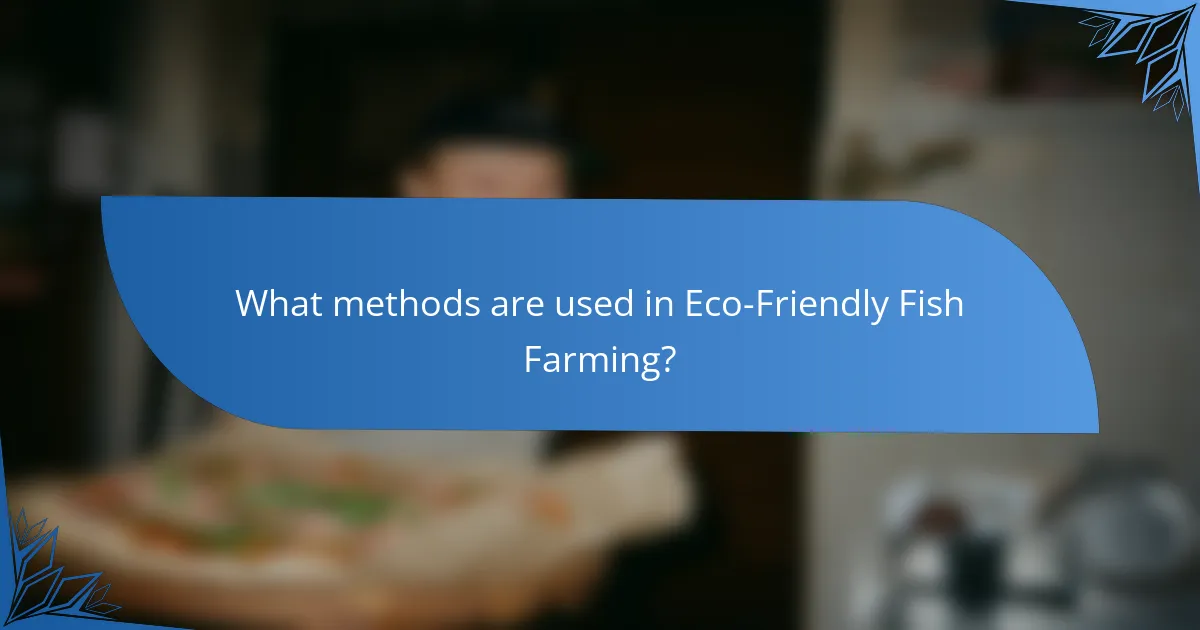
What methods are used in Eco-Friendly Fish Farming?
Eco-friendly fish farming employs several sustainable methods. These include integrated multi-trophic aquaculture (IMTA), which combines different species to enhance environmental balance. Recirculating aquaculture systems (RAS) minimize water use and reduce waste. Use of organic feed ensures fish are raised without harmful chemicals. Natural filtration systems, such as constructed wetlands, help maintain water quality. Additionally, selective breeding promotes disease resistance and growth efficiency. These methods collectively aim to reduce environmental impact and promote biodiversity in aquaculture practices.
What are the different types of Eco-Friendly Fish Farming systems?
Recirculating Aquaculture Systems (RAS), Integrated Multi-Trophic Aquaculture (IMTA), and Aquaponics are the main types of eco-friendly fish farming systems. RAS minimizes water use and recycles water while maintaining fish health. IMTA combines different species to create a balanced ecosystem, reducing waste and enhancing productivity. Aquaponics integrates fish farming with plant cultivation, utilizing fish waste as fertilizer. These systems promote sustainability by reducing environmental impact and conserving resources. Research indicates that RAS can reduce water use by up to 90% compared to traditional methods. IMTA has been shown to increase overall yield and biodiversity in aquaculture. Aquaponics can produce both fish and vegetables in a symbiotic environment, optimizing space and resources.
How do recirculating aquaculture systems work?
Recirculating aquaculture systems (RAS) work by continuously filtering and reusing water in fish farming. Water is drawn from fish tanks and passed through mechanical and biological filters. These filters remove waste products and harmful substances. After filtration, water is oxygenated before returning to the fish tanks. This process minimizes water usage and maintains a stable environment for fish. RAS can achieve high-density fish production with lower environmental impact. Research shows that RAS can reduce water consumption by up to 90% compared to traditional aquaculture methods.
What is integrated multi-trophic aquaculture?
Integrated multi-trophic aquaculture (IMTA) is a sustainable aquaculture practice. It involves cultivating different species from various trophic levels together in a single system. IMTA typically combines fed species, such as fish, with extractive species, like shellfish and seaweeds. The fed species produce waste, which serves as nutrients for the extractive species. This symbiotic relationship enhances resource efficiency and reduces environmental impacts. Research indicates that IMTA can improve overall production and sustainability in aquaculture systems. Studies have shown that IMTA can lead to increased yields while minimizing waste and pollution.
How do fish species selection and breeding practices affect Eco-Friendly Fish Farming?
Fish species selection and breeding practices significantly influence eco-friendly fish farming. Selecting species that are well-suited to local environments reduces stress and disease. Breeding practices that prioritize genetic diversity enhance resilience against environmental changes. Sustainable species like tilapia and catfish require less feed and have lower ecological footprints. Research shows that specific breeding techniques can improve growth rates and feed efficiency. For example, selective breeding has led to tilapia strains that grow faster and require less protein. This results in lower resource consumption and waste production. Overall, careful selection and breeding contribute to the sustainability and efficiency of eco-friendly fish farming.
What criteria are used for selecting fish species in sustainable farming?
Criteria for selecting fish species in sustainable farming include growth rate, feed conversion efficiency, and environmental tolerance. Fast-growing species reduce farming time and increase yield. High feed conversion efficiency means less feed is needed for growth. Species that tolerate varying environmental conditions can thrive in diverse farming systems. Additionally, market demand influences species selection to ensure profitability. Genetic diversity is crucial to maintain resilience against diseases. Sustainable farming practices also consider the ecological impact of the species chosen. Overall, these criteria help optimize production while minimizing environmental harm.
How does breeding for disease resistance contribute to sustainability?
Breeding for disease resistance enhances sustainability in fish farming by reducing the need for chemical treatments. This method leads to healthier fish populations, which can thrive in various environments. Healthier fish are less susceptible to diseases, minimizing mortality rates. Lower mortality rates contribute to more efficient resource use, including feed and water. Additionally, reducing chemical treatments lessens environmental pollution and chemical runoff. This approach supports ecosystem balance and biodiversity. Research indicates that disease-resistant strains can increase yield by up to 30%. Sustainable practices foster long-term viability for fish farming industries.
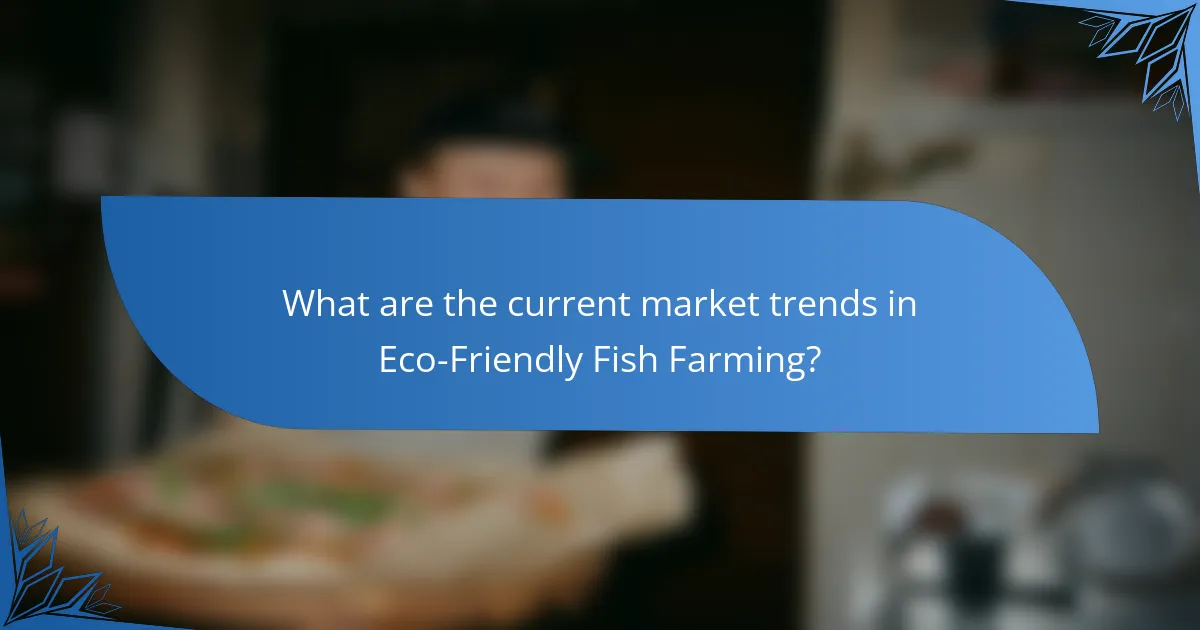
What are the current market trends in Eco-Friendly Fish Farming?
Current market trends in eco-friendly fish farming include increasing demand for sustainable seafood and advancements in aquaculture technology. Consumers are prioritizing environmentally responsible practices. As a result, there is a rise in certifications for sustainable fish farming. Innovations such as recirculating aquaculture systems (RAS) are gaining traction. These systems minimize water use and reduce waste. Additionally, integration of plant-based feeds is becoming more common. This shift reduces reliance on wild fish stocks. Market research indicates a projected growth of 10% annually in this sector through 2025. Such trends reflect a broader commitment to sustainability in food production.
How is consumer demand shaping the Eco-Friendly Fish Farming market?
Consumer demand is significantly shaping the Eco-Friendly Fish Farming market. Increased awareness of sustainability drives consumers to seek responsibly sourced seafood. This demand influences fish farmers to adopt eco-friendly practices. Many consumers prefer fish that are farmed without harmful chemicals or antibiotics. Research shows that 60% of consumers are willing to pay more for sustainable seafood. Retailers are responding by stocking more eco-certified fish products. This shift encourages innovation in farming techniques that minimize environmental impact. Consequently, the market is moving towards practices that prioritize ecological balance and fish welfare.
What are the trends in consumer preferences for sustainably sourced seafood?
Consumer preferences for sustainably sourced seafood are increasingly focused on transparency and ethical practices. A growing number of consumers prioritize seafood that is certified by recognized sustainability standards. Research indicates that over 70% of consumers are willing to pay more for sustainably sourced seafood. Additionally, younger generations show a stronger inclination towards eco-friendly options. They often seek information about the origin and fishing methods of their seafood. The demand for local and traceable seafood is also on the rise. Many consumers are influenced by environmental concerns regarding overfishing and habitat destruction. As a result, brands that communicate their sustainability efforts effectively are gaining a competitive edge in the market.
How are retailers responding to the demand for Eco-Friendly fish products?
Retailers are increasingly offering eco-friendly fish products to meet consumer demand. They are sourcing fish from sustainable fisheries and aquaculture operations. Many retailers are adopting certifications such as MSC (Marine Stewardship Council) and ASC (Aquaculture Stewardship Council). These certifications ensure that fish products are harvested responsibly. Retailers are also enhancing transparency in their supply chains. This allows consumers to trace the origin of their fish products. Additionally, retailers are investing in marketing campaigns that promote eco-friendly options. Research indicates that 70% of consumers prefer sustainable seafood choices. This trend is driving retailers to expand their eco-friendly fish product lines.
What innovations are driving growth in Eco-Friendly Fish Farming?
Innovations driving growth in eco-friendly fish farming include advanced breeding techniques, sustainable feed alternatives, and integrated multi-trophic aquaculture systems. Genetic selection enhances fish resilience and growth rates. Sustainable feed alternatives reduce reliance on wild fish stocks. Integrated multi-trophic aquaculture promotes biodiversity and nutrient recycling. Technologies like recirculating aquaculture systems minimize water use and waste. Automation and monitoring tools improve efficiency and reduce labor costs. These innovations collectively contribute to more sustainable and productive fish farming practices.
How is technology being utilized to enhance Eco-Friendly Fish Farming practices?
Technology enhances eco-friendly fish farming through precision aquaculture, automated monitoring, and sustainable feed solutions. Precision aquaculture utilizes sensors and data analytics to optimize water quality and fish health. Automated monitoring systems track parameters like temperature and oxygen levels in real-time, improving fish welfare. Sustainable feed solutions use alternative protein sources to reduce reliance on wild fish stocks. Additionally, recirculating aquaculture systems minimize water usage and waste. Research indicates that these technologies can increase production efficiency by up to 30% while reducing environmental impact.
What role do certifications and labeling play in market trends?
Certifications and labeling significantly influence market trends by enhancing consumer trust and driving purchasing decisions. They provide assurance of product quality, safety, and sustainability. For instance, eco-labels indicate environmentally friendly practices in fish farming. Research shows that 66% of consumers are willing to pay more for sustainably sourced products. Certifications also help differentiate products in a crowded market. This differentiation can lead to increased market share for certified brands. Additionally, labeling can influence regulatory compliance, shaping industry standards. Overall, certifications and labeling are crucial in aligning consumer preferences with market offerings.
What practical tips can be applied to improve Eco-Friendly Fish Farming practices?
Implementing integrated multi-trophic aquaculture (IMTA) can enhance eco-friendly fish farming. IMTA combines different species, allowing waste from one species to serve as food for another. This method reduces feed costs and minimizes environmental impact. Utilizing native species can also improve sustainability. Native species are better adapted to local conditions and require fewer resources.
Employing efficient feed management is crucial. Precision feeding techniques can reduce waste and improve fish health. Regular monitoring of water quality is essential. Maintaining optimal conditions prevents disease and promotes growth.
Utilizing renewable energy sources, such as solar or wind, can lower carbon footprints. Renewable energy reduces reliance on fossil fuels, making operations more sustainable. Additionally, reducing antibiotic use through better fish health management is vital. Healthy fish are less susceptible to disease, decreasing the need for antibiotics.
Finally, engaging in responsible sourcing practices can enhance sustainability. Sourcing feed from certified suppliers ensures minimal environmental impact. These practices collectively contribute to eco-friendly fish farming.
Eco-friendly fish farming is a sustainable aquaculture method that minimizes environmental impact through responsible practices such as integrated multi-trophic aquaculture (IMTA) and the use of organic feed. This article explores the differences between eco-friendly and traditional fish farming, highlighting key practices that promote biodiversity and resource conservation. It also discusses the economic benefits of sustainable fish farming, including job creation and increased profitability, while addressing current market trends driven by consumer demand for responsibly sourced seafood. Additionally, the article examines innovations and technologies that enhance eco-friendly practices, along with the role of certifications in shaping market dynamics.
